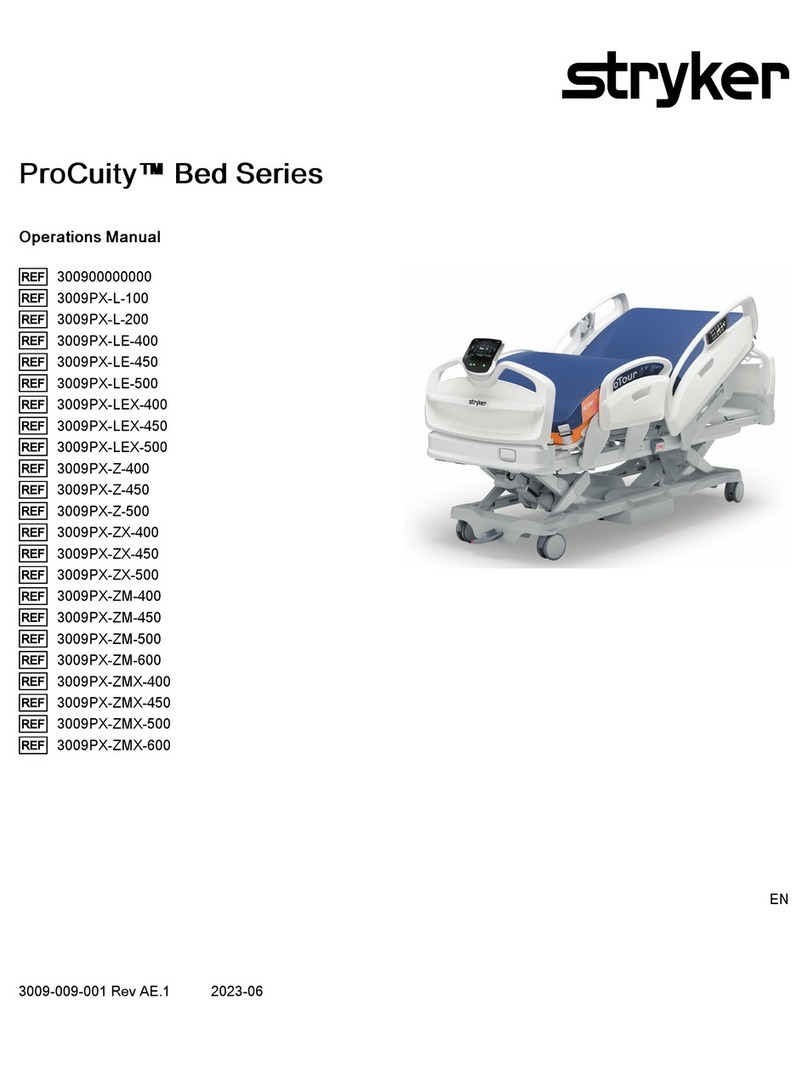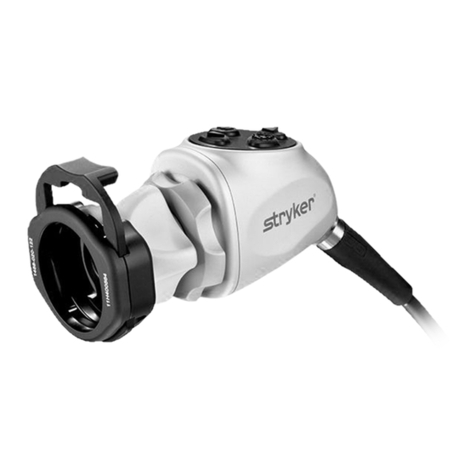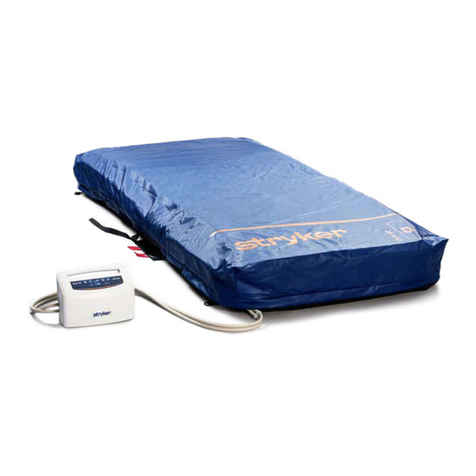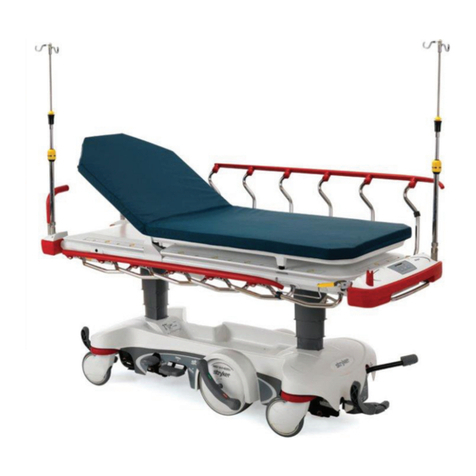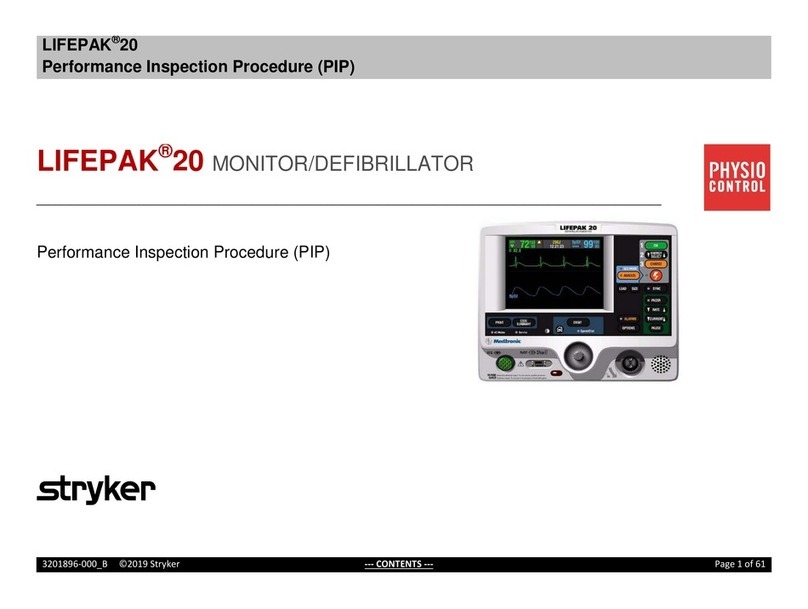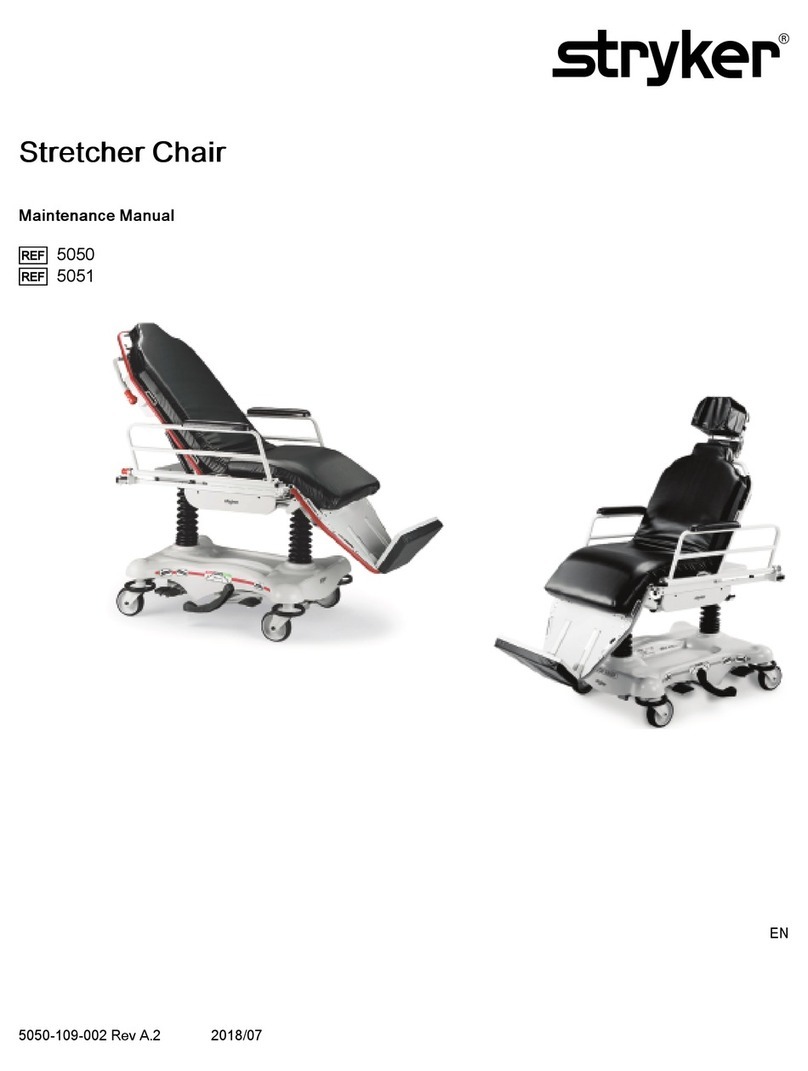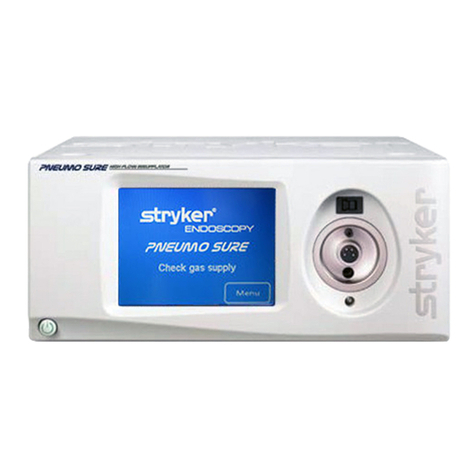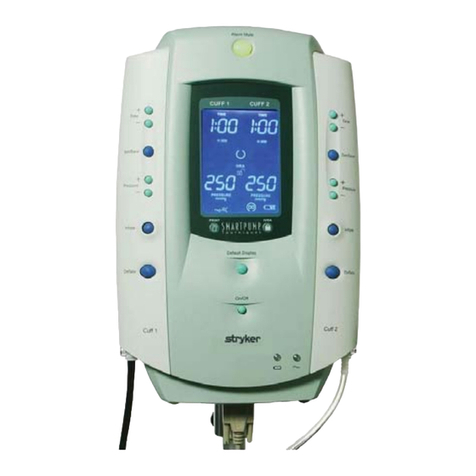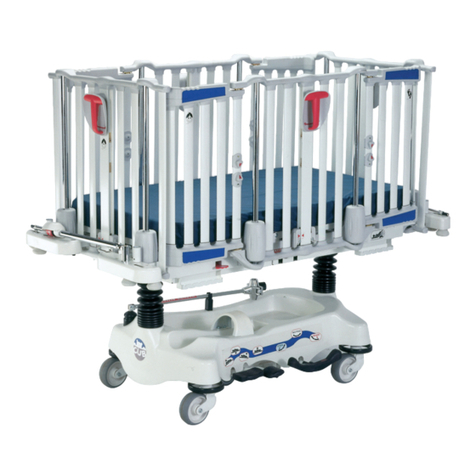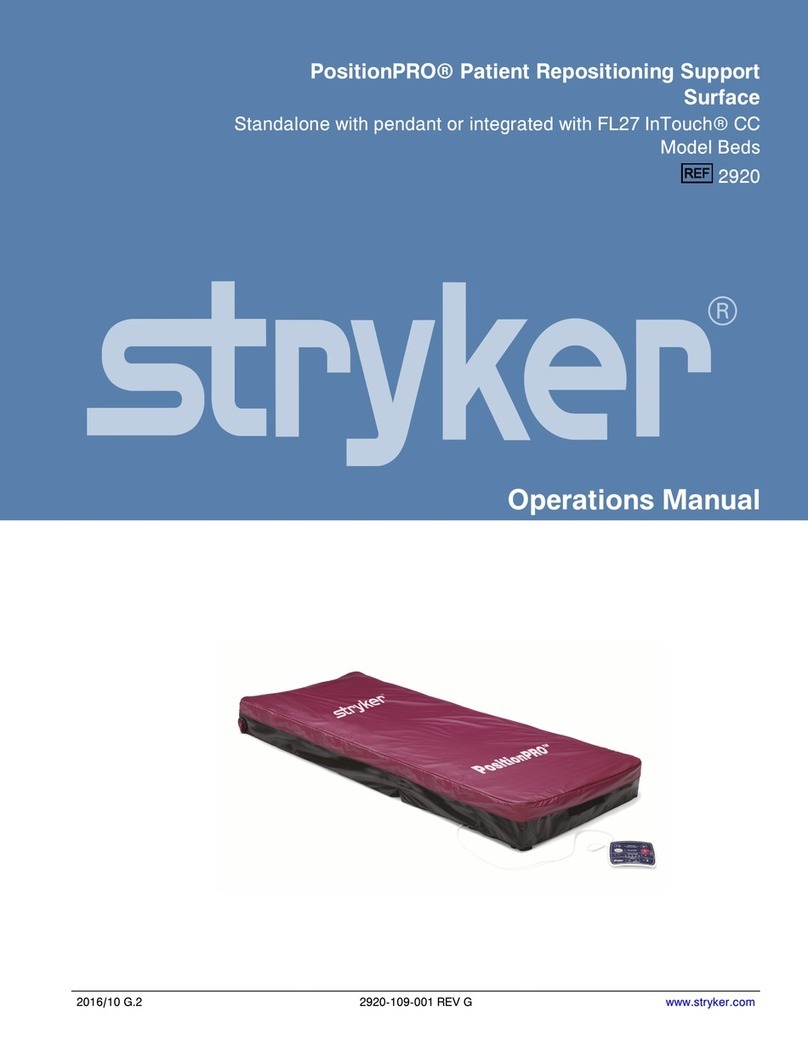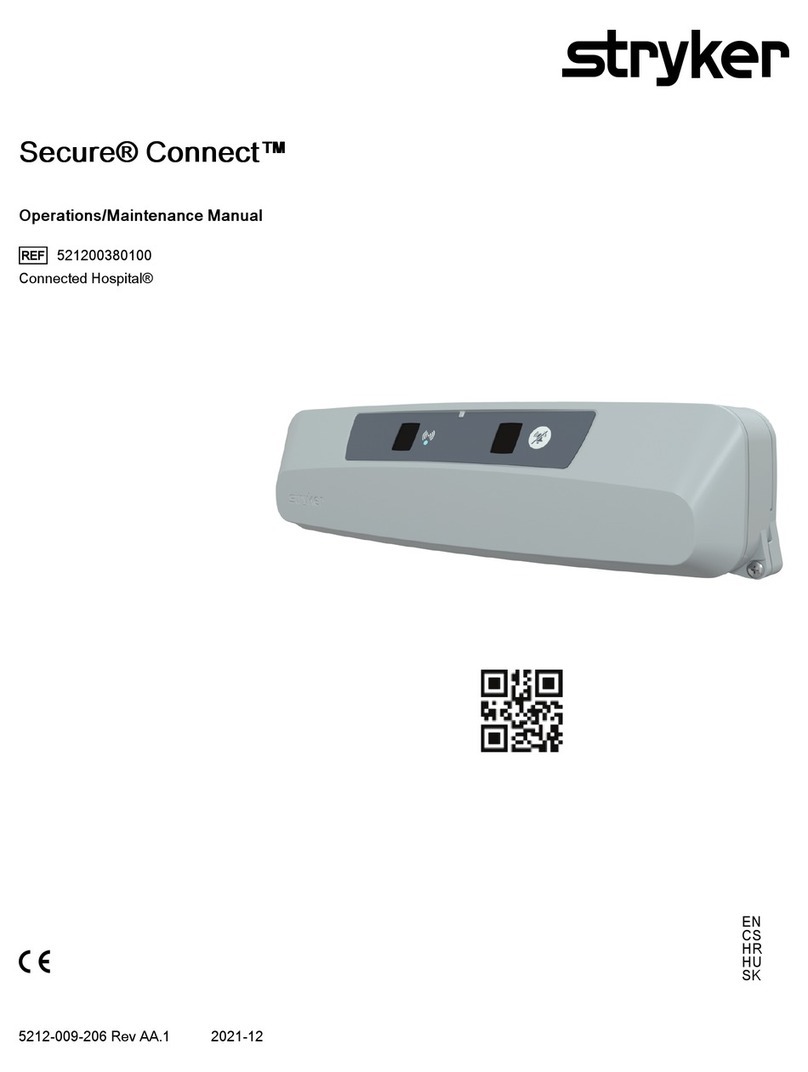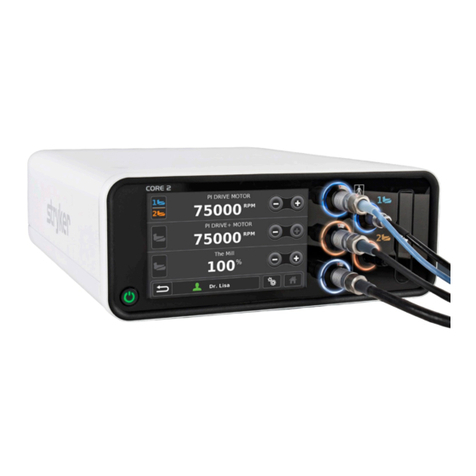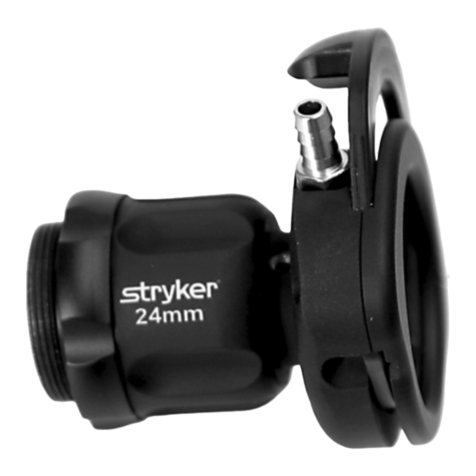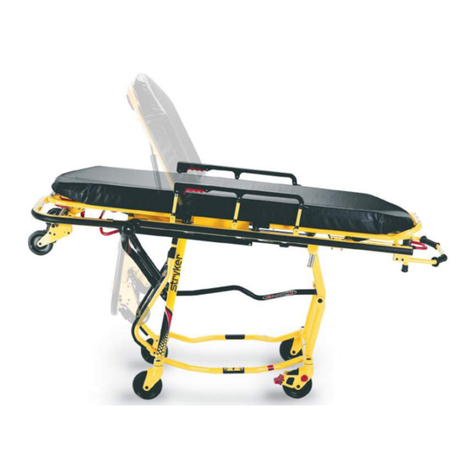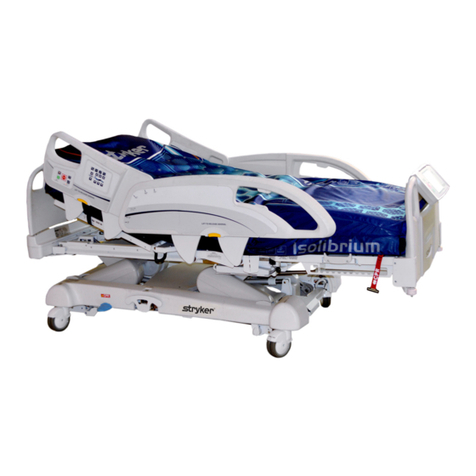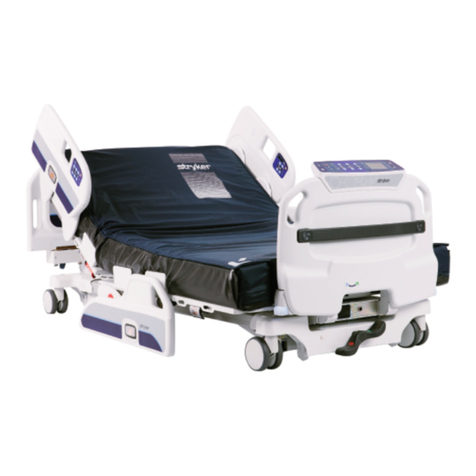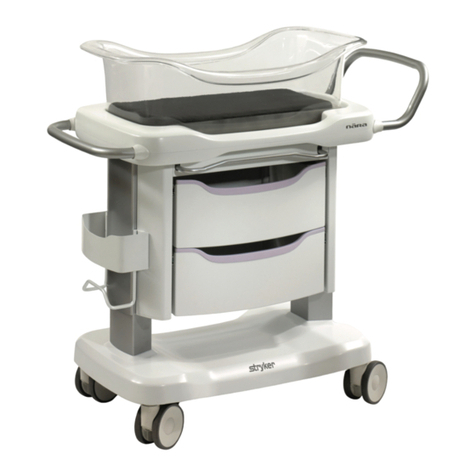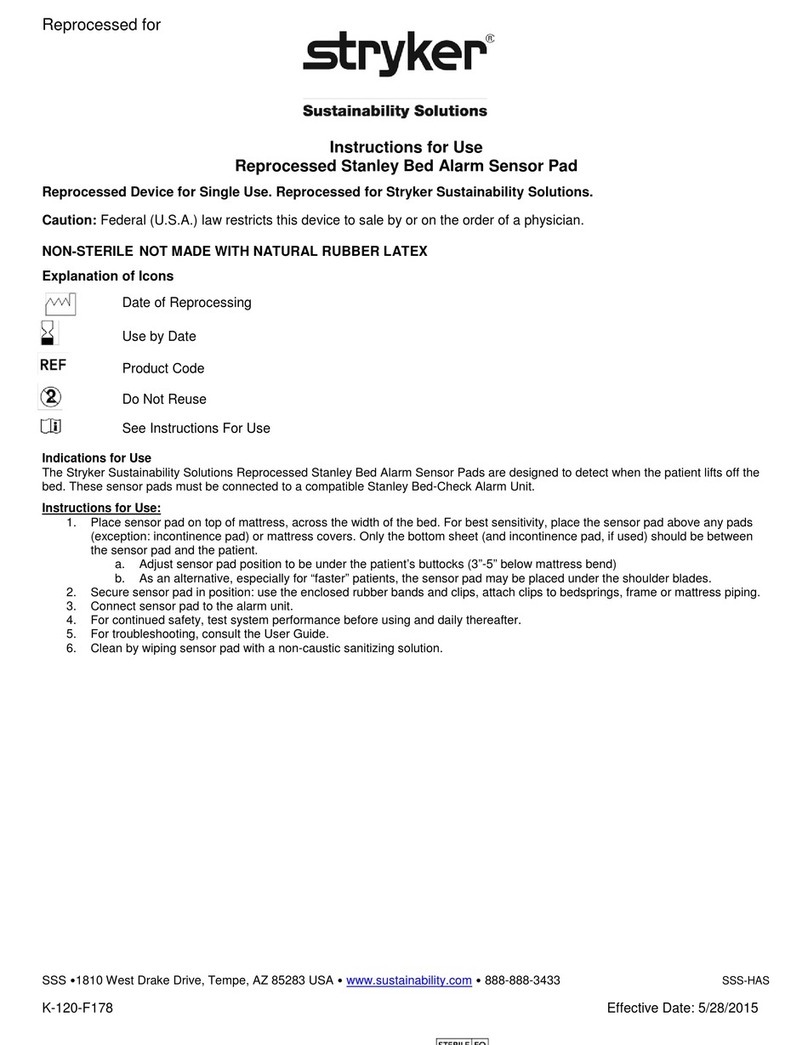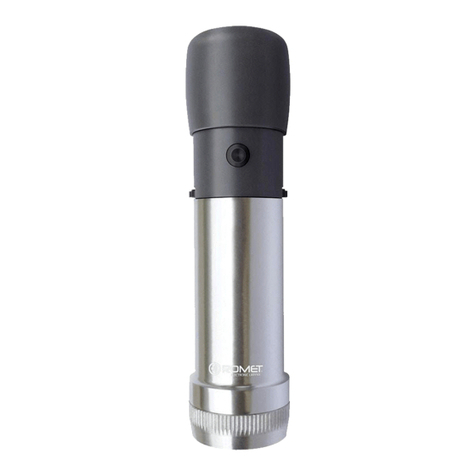
Introduction
3
SAFETY TIPS AND GUIDELINES
Before operating the Secure Bed, it is important to read and understand all information in this manual. Care-
fully read and strictly follow the safety guidelines listed on this page.
It is important that all users have been trained and educated on the inherent hazards associated with the
usage of electric beds.
WARNING
SThe Secure 3000 Bed is not intended for use with patients less than two years of age.
SPowered bed mechanisms can cause serious injury. Operate bed only when all persons are clear of the
mechanisms.
STo help reduce the number and severity of falls by patients, always leave the bed in the lowest position
when the patient is unattended.
SLeave the siderails fully up and locked when the patient is unattended. When raising the siderails, listen
for the ”click”that indicates the siderail has locked in the up position. Pull firmly on the siderail to ensure
it is locked into position.
Siderails are not intended to be a patient restraint device. It is the responsibility of the attending medical
personnel to determine the degree of restraint necessary to ensure a patient will remain safely in bed.
SAlways keep the caster brakes applied when a patient is on the bed (except during transport). Serious
injury could result if the bed moves while a patient is getting in or out of bed. After the brake pedal is
applied, push on the bed to ensure the brakes are locked. When moving the bed, toggle the steer pedal
to put the bed in the steer mode. This locks the swivel motion of the right foot end caster and makes the
bed easier to move.
SDo not attempt to move the foot end of the bed laterally when the steer pedal is activated. When the steer
pedal is activated, the steer caster at the foot end of the bed cannot swivel. Attempting to move the bed
laterally when the steer pedal is activated may cause injury to the user.
SWhen large spills occur in the area of the circuit boards, 110 volt cables and motors, immediately unplug
the bed power cord from the wall socket. Remove the patient from the bed and clean up the fluid. Have
maintenance completely check the bed. Fluids can affect the operational capabilities of any electrical
product. DO NOT put the bed back into service until it is completely dry and has been thoroughly tested
for safe operation.
SDo not steam clean or hose off the bed. Do not immerse any part of the bed. The internal electric parts
may be damaged by exposure to water. Hand wash all surfaces of the bed with warm water and mild
detergent. Dry thoroughly. Quaternary Germicidal Disinfectants, used as directed, and/or Chlorine
Bleach products, typically 5.25% Sodium Hypochlorite in dilutions ranging between 1 part bleach to 100
parts water, and 2 parts bleach to 100 parts water are not considered mild detergents. THESE PROD-
UCTS ARE CORROSIVE IN NATURE AND MAY CAUSE DAMAGE TO YOUR BED IF USED IMPROP-
ERLY. If these types of products are used to clean Stryker patient care equipment, measures must be
taken to insure the beds are wiped with clean water and thoroughly dried following cleaning. Failure to
properly rinse and dry the beds will leave a corrosive residue on the surface of the bed, possibly causing
premature corrosion of critical components. Failure to follow the above directions when using these types
of cleaners may void this product’s warranty.
Clean Velcro AFTER EACH USE. Saturate Velcro with disinfectant and allow disinfectant to evaporate.
(Appropriate disinfectant for nylon Velcro should be determined by the hospital.)
SPreventative maintenance should be performed at a minimum of biannually to ensure all bed features
are functioning properly. Close attention should be given to safety features including, but not limited to:
safety side latching mechanisms, frayed electrical cords and components, all electrical controls return
to off or neutral position when released, caster braking systems, no controls or cabling entangled in bed
mechanisms, leakage current 100 microamps maximum, scale and bed exit systems calibrated properly.
SAlways unplug bed during service or cleaning. When working under the bed with the bed in the high posi-
tion, always place blocks under the litter frame and set the brakes to prevent injury in case the Bed Down
switch is accidently pressed.
